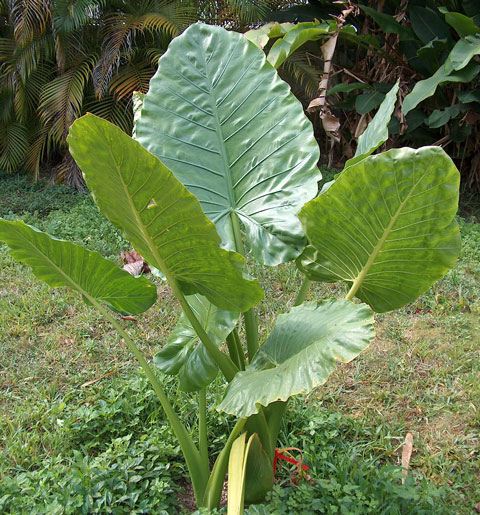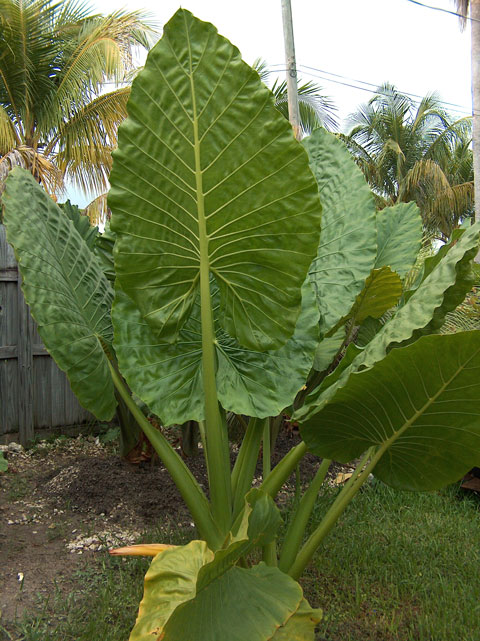
Alocasia macrorrhizos "Borneo Giant"
This specimen first bloomed for us in Spring 2005, yet was just under 5 feet tall to the tip of the largest leaf at the time of blooming. This plant has already attained a much larger size, as is evident from the picture below, taken in July 2005. The plant has grown much more since that picture was taken, having developed a cluster of heavy trunks, so you can see this is a massively growing Alocasia.
Alocasia "Borneo Giant" is said to be yet another variety of A. macrorrhizos, and it may well be, but for our purposes, the objective is to get the genetic propensity for very large size into some new, hardier hybrids. Developing seedlings indicate that we are well on the way to accomplishing this objective.

We will note here that this plant is not to be confused with the "legendary" Alocasia robusta. The inflorescences and blooming habit differ greatly between the two plants, with A. robusta producing inflorescences whose spathes are maroon-purple above the constriction, and creamy-pinkish in color with possible purplish-maroon spotting below, while A. "Borneo Giant" produces two inflorescences per leaf axil, with spathes green in color, turning light yellow at male anthesis. The A. robusta has a powdery-appearing underside to the leaves which A. "Borneo Giant" lacks. The A. robusta is reputed to grow much larger than the A. "Borneo Giant", yet so far we have not received verifiable reports of such specimens being grown in the United States. Our experience with A. robusta so far indicates that it is much more difficult to grow than most Alocasias we've worked with, and is not likely to become a "garden variety" item in the foreseeable future.
By contrast, the Alocasia "Borneo Giant" is relatively easy to grow to impressive sizes, even in northern climes during the summertime, if cultured properly.

During Spring and Summer 2007, this plant has been a party to a veritable orgy of hybridization, with many of the crosses setting seed successfully. The picture above illustrates some of this riot of activity, with berries in several stages of development visible. The orange berries, almost ripe, are from a cross using A. reticulata, and some of the green berries from an improbable cross using pollen from A. rugosa! Between crosses, this plant sets berries from open pollination (selfing), as evidenced by the red berries visible.
Click here to view Borneo Giant Page 2!
| In the Lab | In the Field | The Species | Fruiting | The Hybrids |